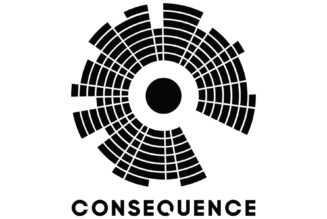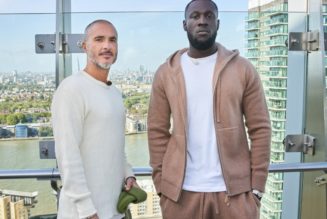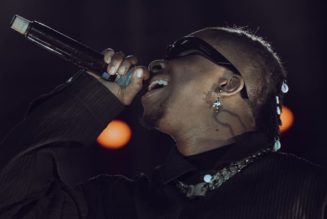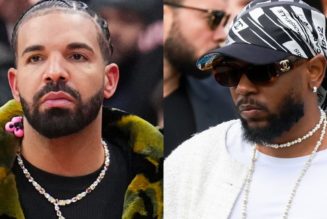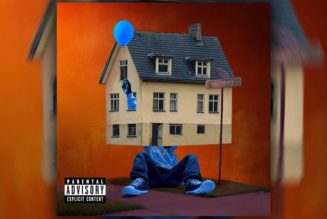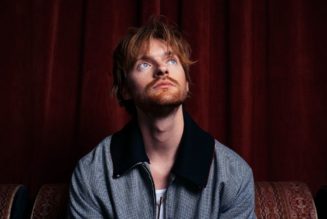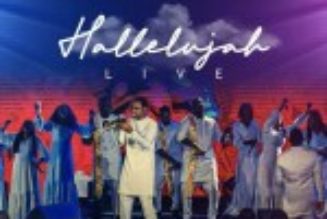It’s not hard to believe that Oliver Tree would rather make movies than music, even if “Miss You,” a cut from his latest LP Alone In a Crowd, boasts half a billion streams on Spotify. “I wanted to be a filmmaker so my music videos are perhaps a different way of satisfying those dreams,” Tree says. A decade, and a rebrand or two later after inking his first record deal at only 20 years old, the Santa Cruz-born artist calls in from New York amid a US tour, which he refers to as “somewhere between a Broadway musical and a high school play.”
For all his streaming success, the quirky, experimental artist still finds himself in the director’s chair. With each album, Tree introduces a new alter ego, who then stars in the accompanying videos, typically montages featuring brazen sketches and stunts. In “Bounce,” Tree breakdances in front of a crowd of his clones, all of whom sport his signature bowl cut. Other visuals see him flip over the side of a building, take on his adversaries MMA-style and ride around on the world’s biggest scooter.
Tree’s visual output – from videos to costumes – is as much a part of his artistic identity as the music itself. “It’s a fusion between really, really lowbrow and really highbrow,” he says. “My work is in the middle – what I aim for is unibrow.”
You’re currently touring Alone In a Crowd, your third studio LP. How was your approach different this time around?
The original version of Alone In a Crowd only has a few tracks that made it on the final version. I wrote over 115 songs for it in total. Thematically, it came after I had had some pretty big success on TikTok. I hate the words “famous” and “celebrity” – those are gross concepts to me – but the more successful I became, the more isolated, Rapunzel-holed-up-in-a-building I felt.
How did that feeling translate, thematically speaking?
Loneliness is a concept everyone deals with – it doesn’t matter who you are or if you have a partner, you still go to bed with your own thoughts in your head. That’s when I realized I wanted to make something that not just explored loneliness but celebrated it in a way. The main goal of this album was to remind lonely people that, if you look around, everyone else also feels alone. And that in itself makes life a little bit less lonely.
115 tracks is quite a lot. How did your musical output evolve over the course of making all of those songs?
It went from a more dark album into one exploring love, because I think you can still be in alone in a crowd with someone else too. You can be alone in that together. It’s a massive world.
My last album was a breakup album. I go to music when I’m in a really dark place but at the same time, I always forget to document the “falling in love” part of the relationship process. This time around, when I was falling in love, I was like “I should probably document this, sonically speaking.” I realized I could put it into a bottle, put the top on and be able to share it with other people.
Circling back to your success on TikTok, many musicians have viral tracks but it seems like fans were drawn to you because you have such a strong – and sometimes downright insane – visual component to your work. Each album also leads with its own unique character. For Alone In a Crowd, it was fashion designer Cornelius Cummings. Can you talk about your relationship to creative direction and worldbuilding?
I don’t have a creative director, I would say the job of an artist is to be the creative director. There are a lot of lines drawn between art and entertainment — people who are performers, people who are writers and these different things. I take great pride in writing every lyric and every melody in my music. If I don’t sing the songs I wrote, and it’s not my story, then who is Oliver Tree?
I wanted to be a filmmaker, so my music videos are perhaps a different way of satisfying those dreams. There’s a narrative and a story to each one. I write every music video, I produce them, I direct them. I designed and curated all the outfits. I develop the hairstyles and the whole world that the aesthetic represents. Every concert is about building the Oliver Tree universe, which my fans refer to as the “Oliververse.” The tour is an exploration of all the characters from my albums, how their worlds intertwine and how they’re all the same person from different timelines in the universe – basically a bizarro feature film.
The characters are an interesting way of evolving and experimenting across albums while still maintaining a sense of identity. I bet a lot of listeners don’t realize Oliver Tree is your real name.
I feel lucky that I found a way to tiptoe around it all while still maintaining one singular identity. I have other friends with musical projects that are in a similar vein, but they feel like they’re stuck as that character and have to kill their project off to do something else. With Oliver Tree, I figured out how to rebrand and while it’s very hard to keep switching things up, that’s a challenge I take on to try to see how much I can make it feel different from album to album.
What did that differentiation between albums look like in practice?
It started with my first album, Ugly is Beautiful, when I wanted to make something that connected with people in a way that isn’t picture-perfect. I explored learning how to love yourself and embracing the things that we consider flaws. With the second album, Cowboy Tears, I was taking the most macho thing, the cowboy, and saying it’s okay for people to cry instead of letting out their aggression through violence. And then, Alone In a Crowd is centered on loneliness. Each album’s character has different needs and feelings and the visual aesthetic leans into those.
Beyond visual aesthetics, you’re also extremely experimental with songwriting and production. You started out playing ska in the early 2010s, for instance. On Spotify, your most-streamed songs are electronic, rave-type tracks but with all your albums, Alone In a Crowd especially, there’s a really broad variety of genres. What was the goal with this project?
To not be pigeonholed. I’ve had experiences before where I made a certain song and the people that signed me were like, “let’s make more of that.” And I was like, “I already made that, I don’t want to make more of that.” If you look at my live show, for example, I play pop, rock music, hip-hop, electronic – there’s even classical music, some folk, my interpretation of country music.
I leaned a lot from the blueprint developed by the Gorillaz. They found ways to combine different styles and still make a cohesive project. Producing and taking the album from concept to the finish line myself gives me a little bit of creative freedom to do that in a way that doesn’t feel so discombobulated. But I’m also not here to please anyone. It’s about doing what I want to do and trying to make something real. If that connects, that’s amazing. And if not, I’ll try something else next time.




